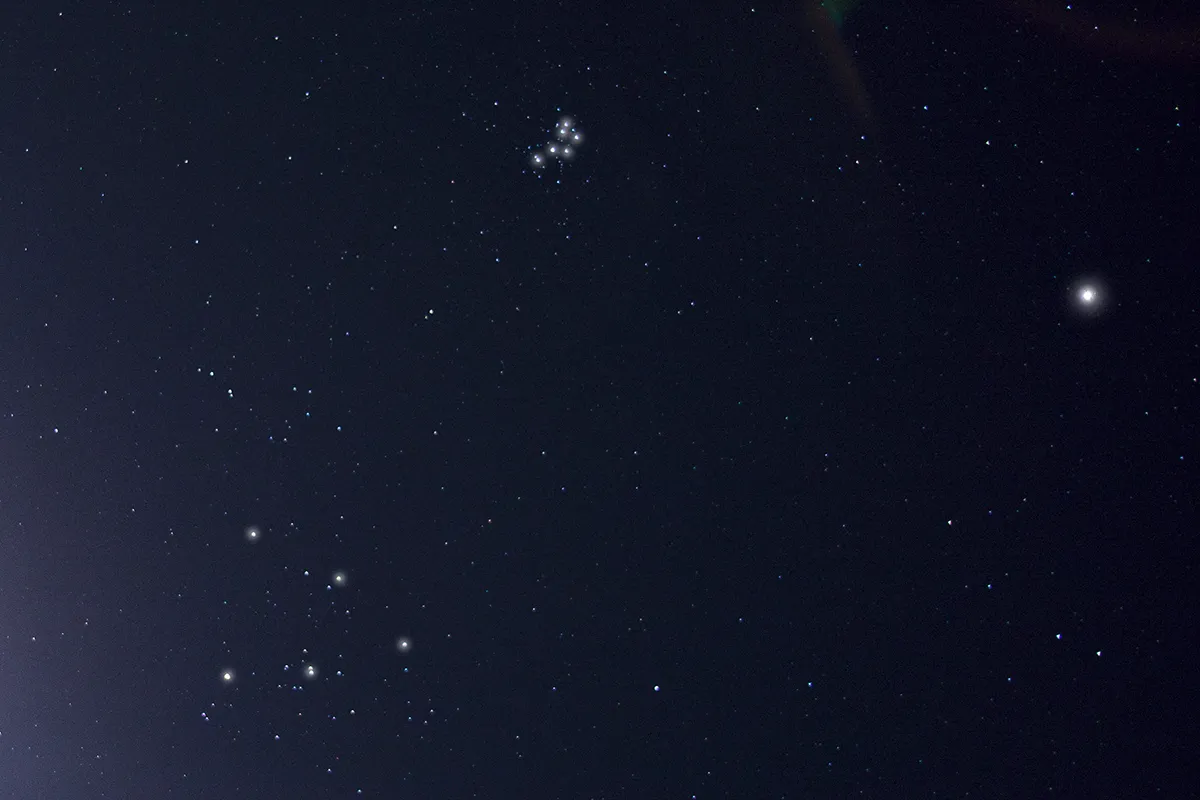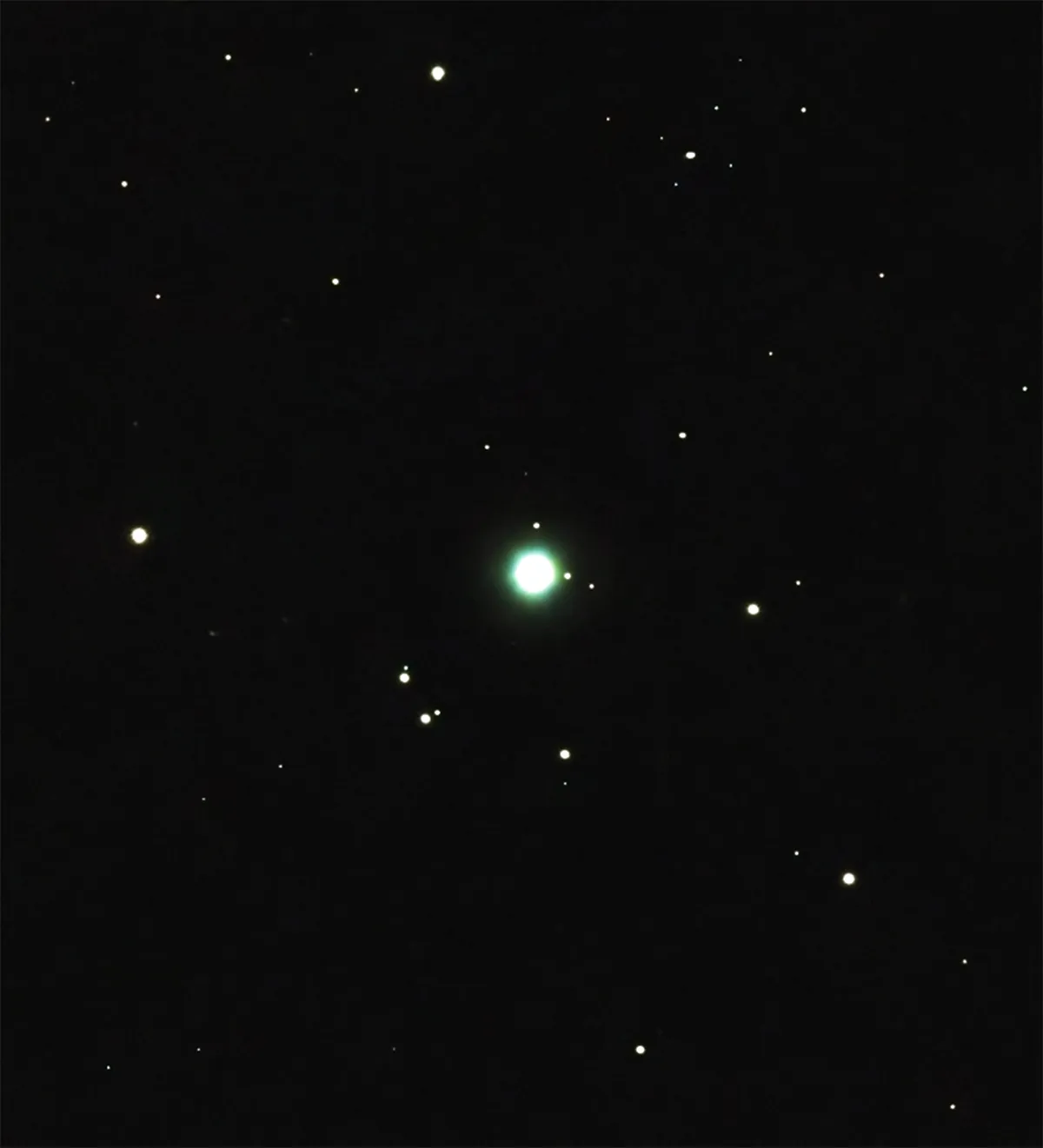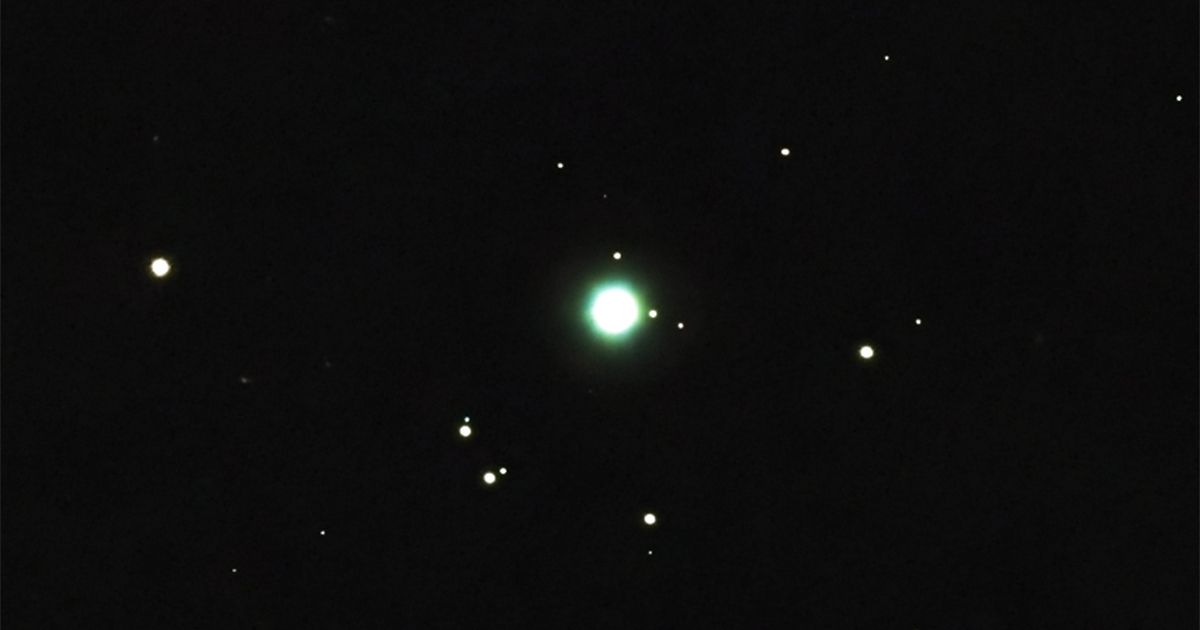It’s surprising how rapidly darkness expands in August, which is perfect timing for viewing the planet Uranus, as by the end of the month it’s able to reach a decent altitude above the southeast horizon before the onset of dawn.
On 1 August, morning twilight truncates the Uranus observing window at around 02:20 BST (01:20 UT), this distant world only achieving a peak altitude of around 16° on this date.
For many years, Uranus has been in stellar limbo on the Aries–Taurus border.
While not particularly difficult to track down, it has lacked bright guiding stars over this period – something that may have put off casual observation.
For weekly stargazing advice, sign up to receive our e-newsletter and subscribe to our YouTube channel.
Uranus near the Pleiades
Having drifted further east at a painfully slow rate, the planet is now well and truly within Taurus and much more conveniently located immediately to the south of the Pleiades open cluster.
On 31 August, the planet’s eastern drift will have moved it into a position 4.5° south-southeast of the centre of the Pleiades.
As a consequence, any widefield image that includes the Pleiades, Aldebaran and the Hyades at this time will also include Uranus.

Observing Uranus in August 2025
Through binoculars, Uranus looks just like a mag. +5.7 star.
However, a small telescope makes the planet’s green hue very apparent, with Uranus resembling a shining emerald under low-power views.
Its disc is tiny at around 3 arcseconds across, but through a small scope using a medium or higher power, it’s evident that this is not a star.
Larger instruments may show subtle banding on the planet’s globe, but this can be very difficult to pick out even when using planetary imaging setups.
Using an imaging arrangement with a high image scale, an extended exposure can be used to reveal the planet’s five brightest moons.

Uranus, August 2025 – quick facts
- Best time to see: 31 August, 04:00 BST (03:00 UT)
- Altitude: 48°
- Location: Taurus
- Direction: Southeast
- Features: Colour, subtle atmospheric banding, moons
- Recommended equipment: 200mm or larger
If you do manage to observe or photograph near the Pleiades in August 2025, we’d love to hear from you! Email us via contactus@skyatnightmagazine.com
